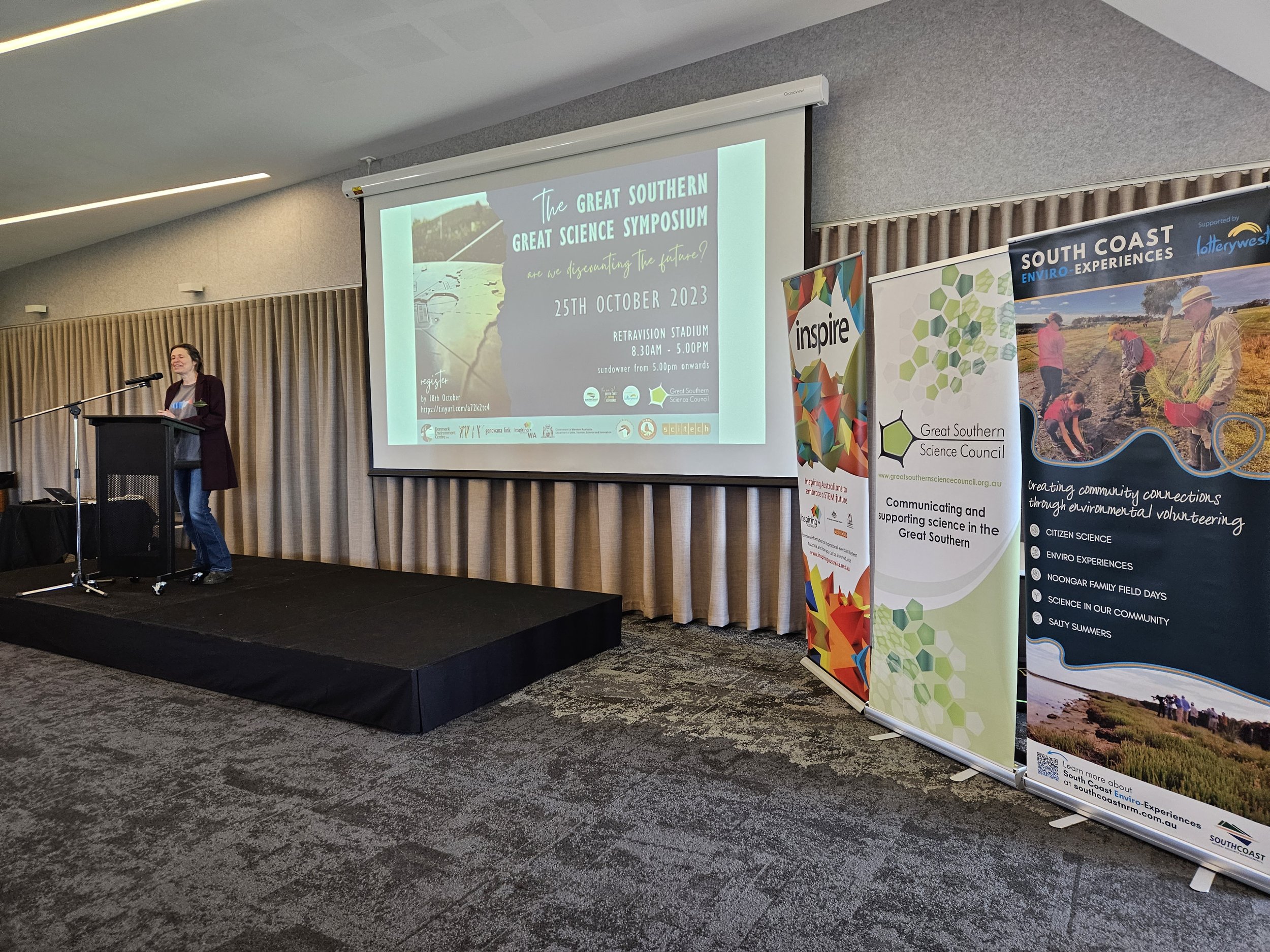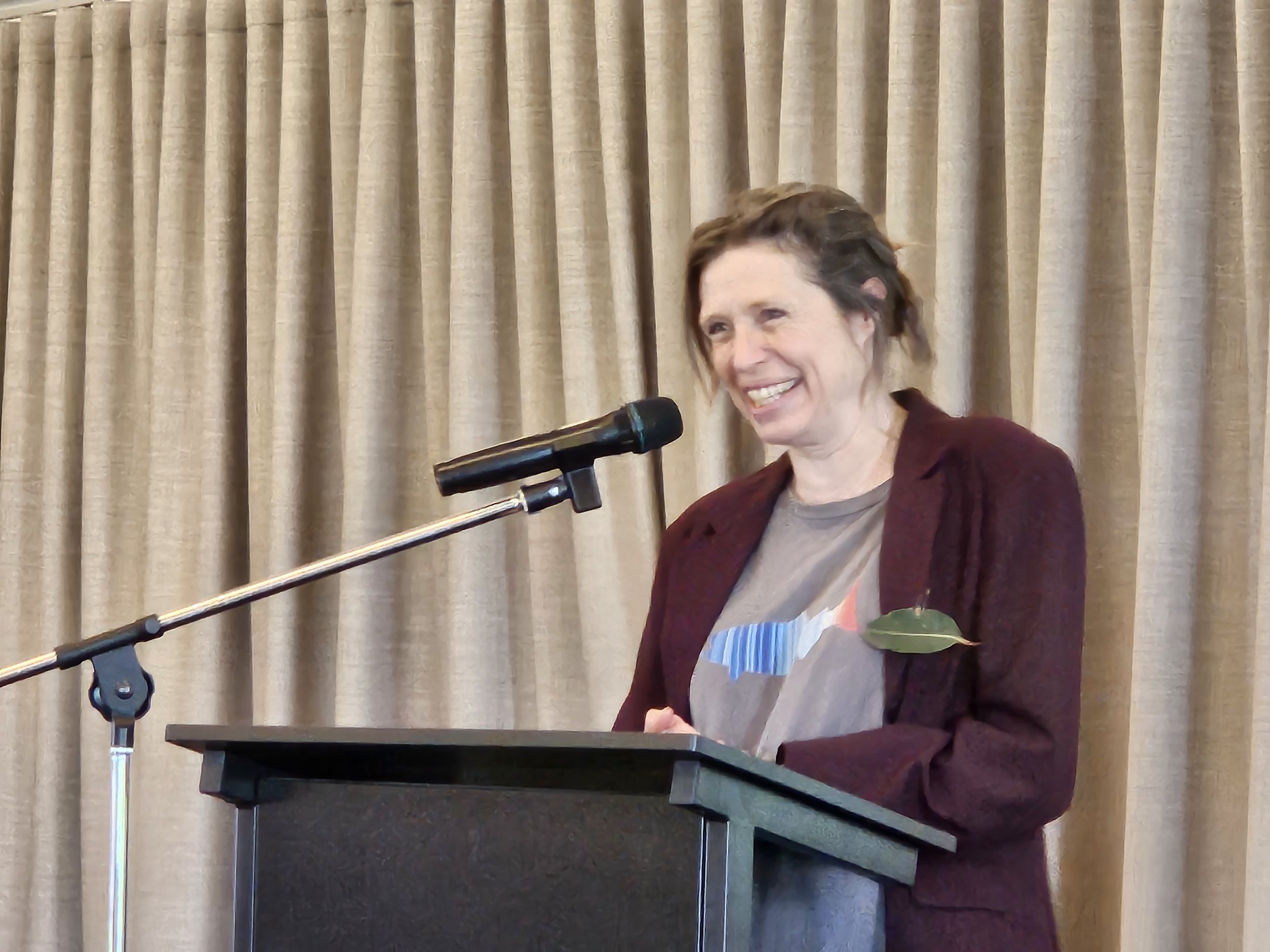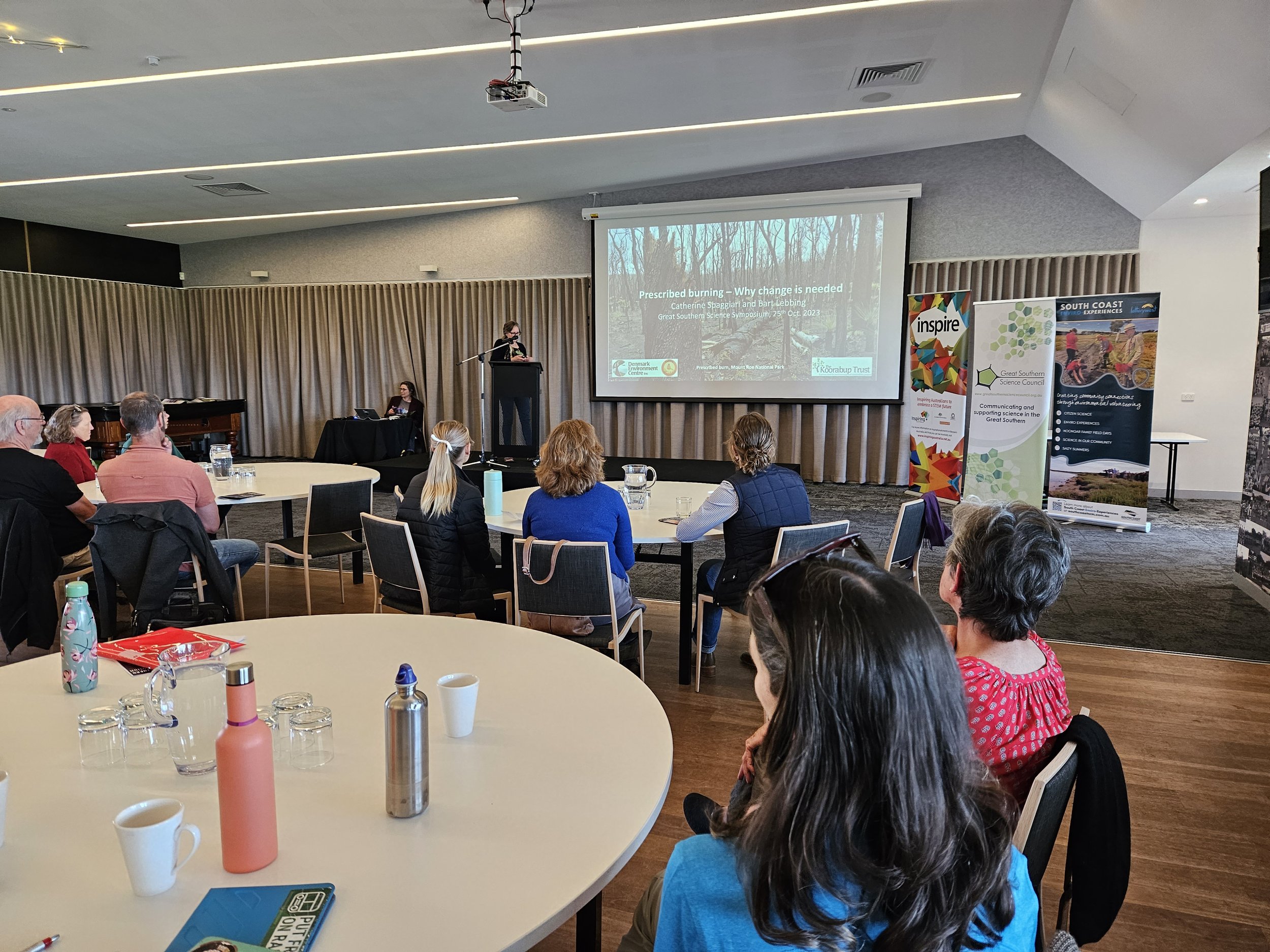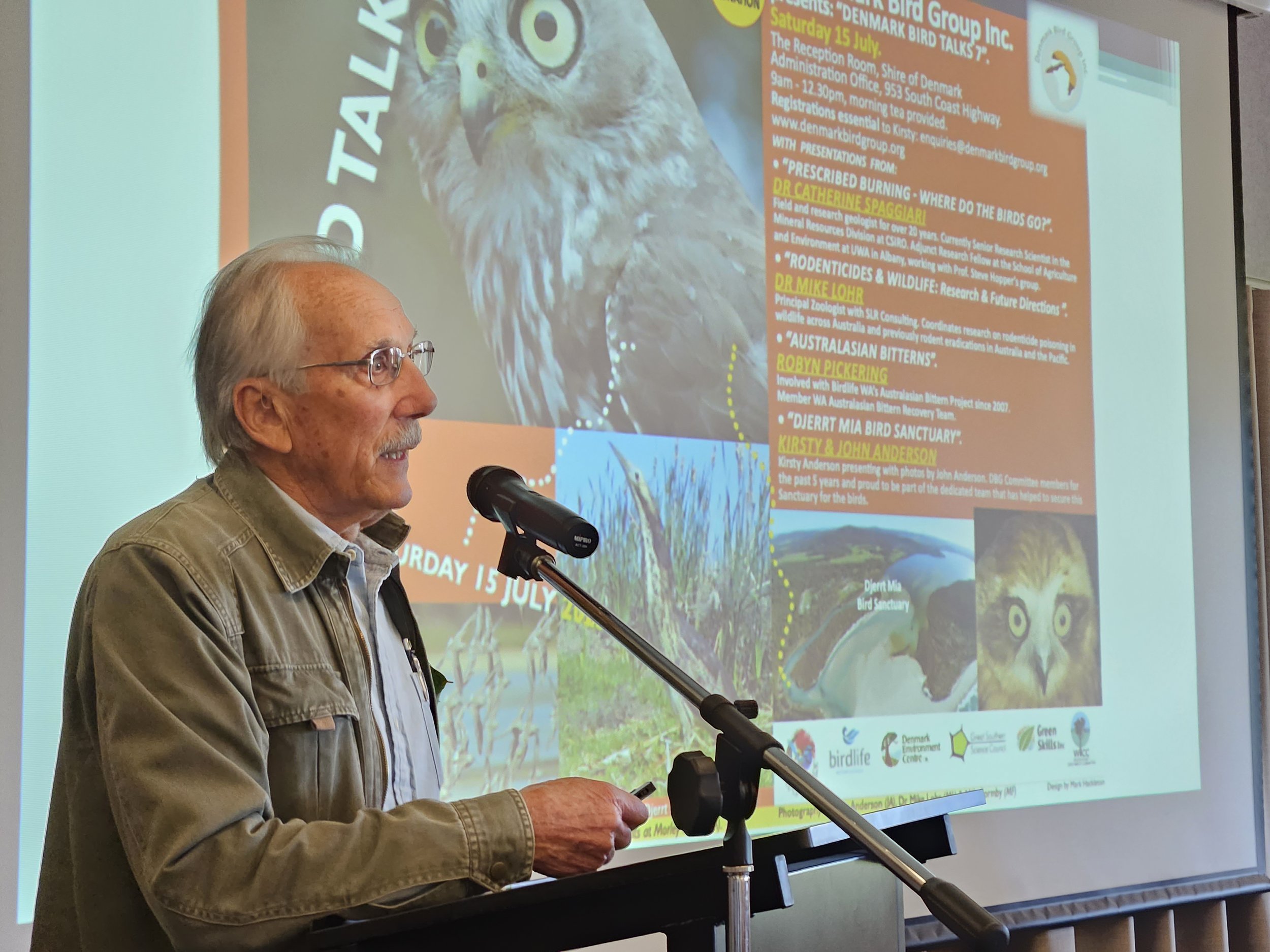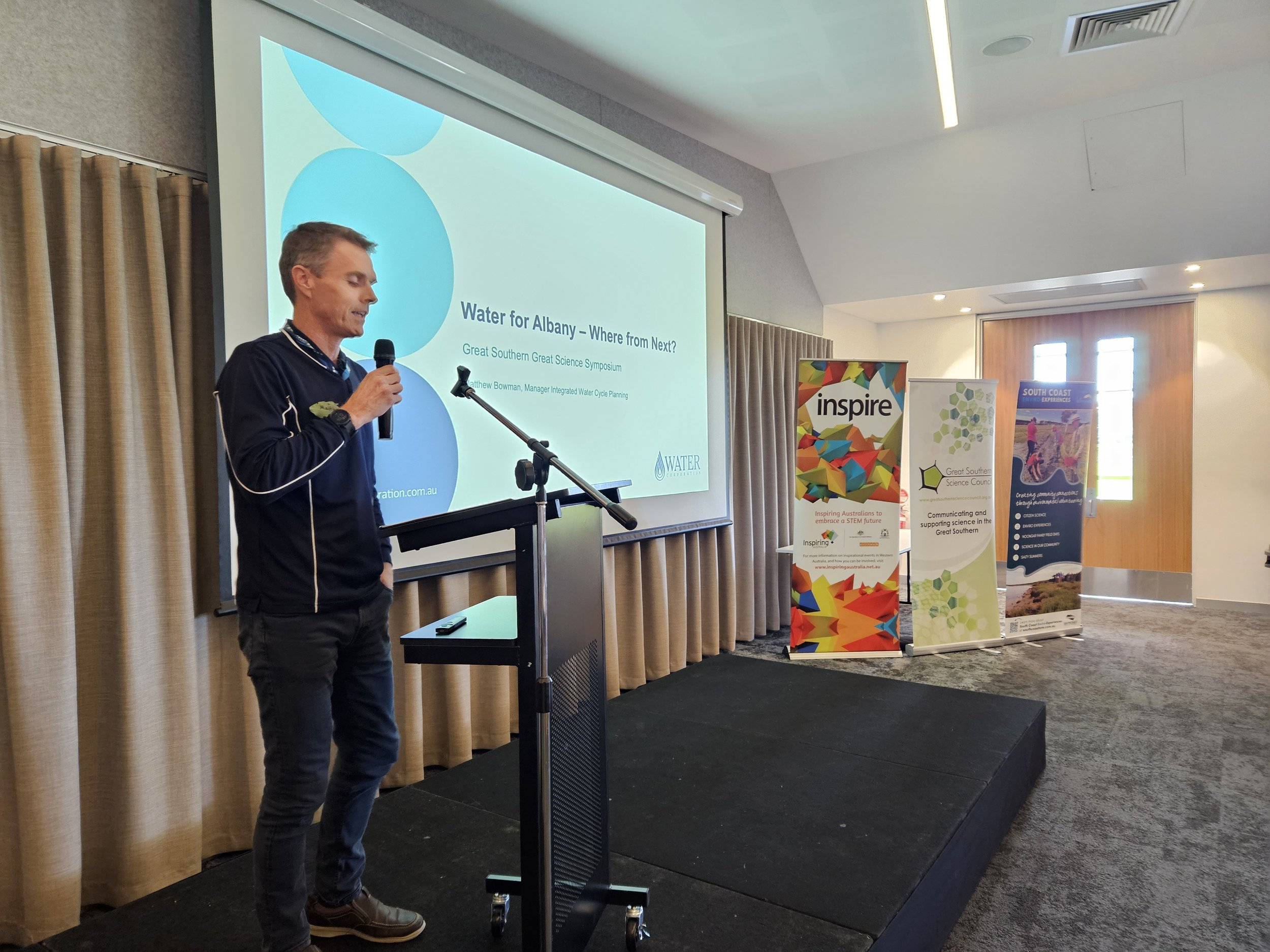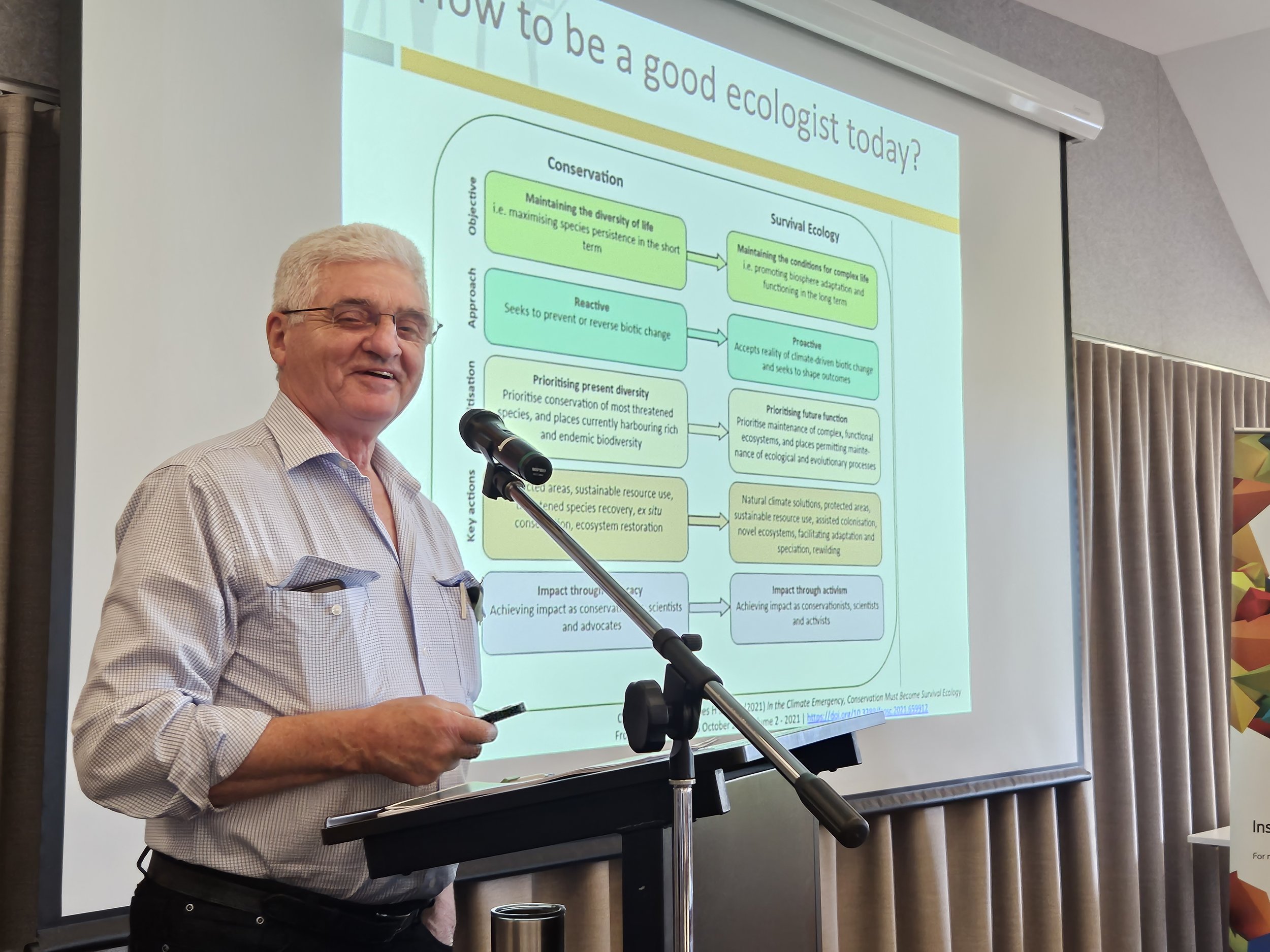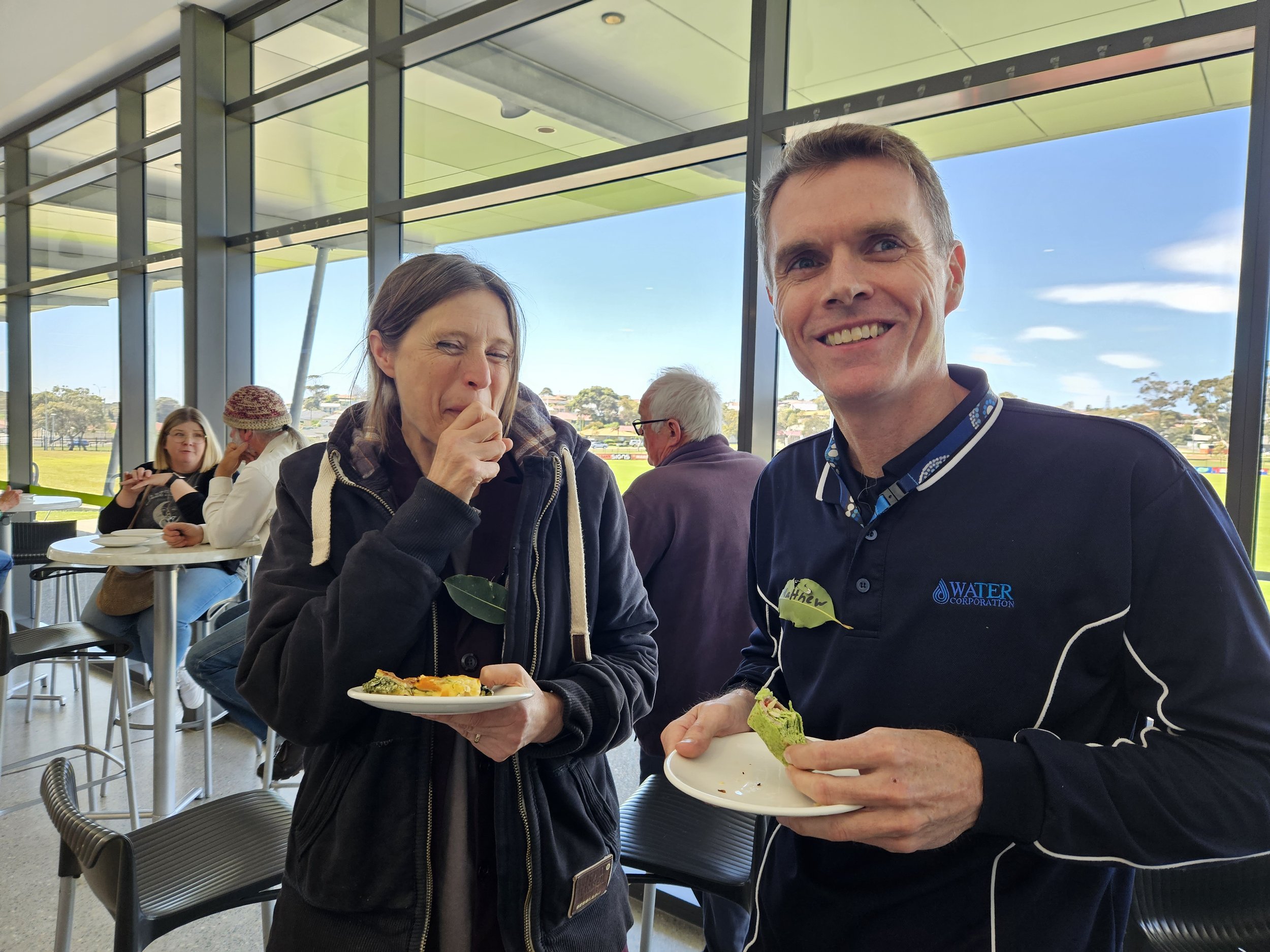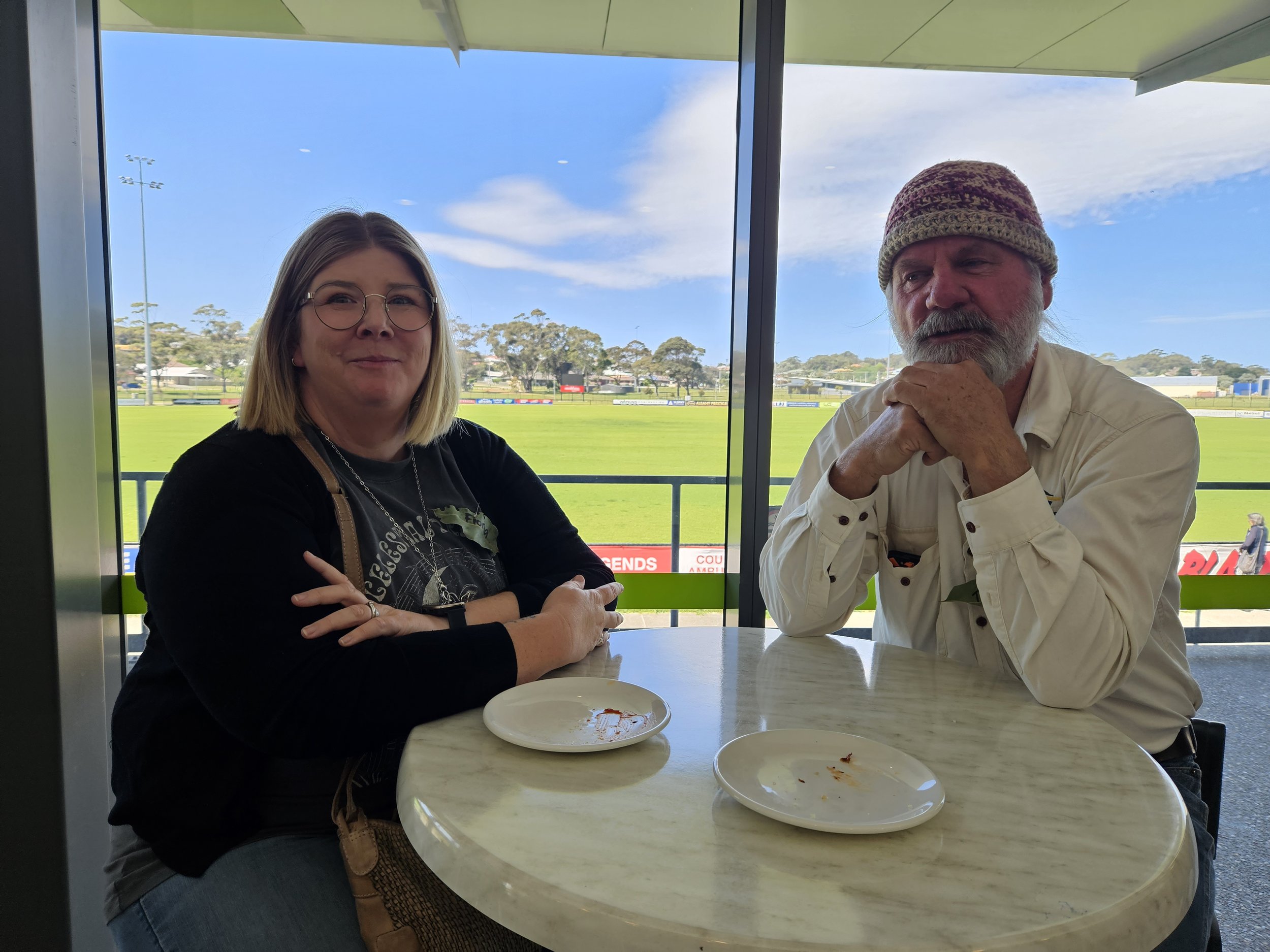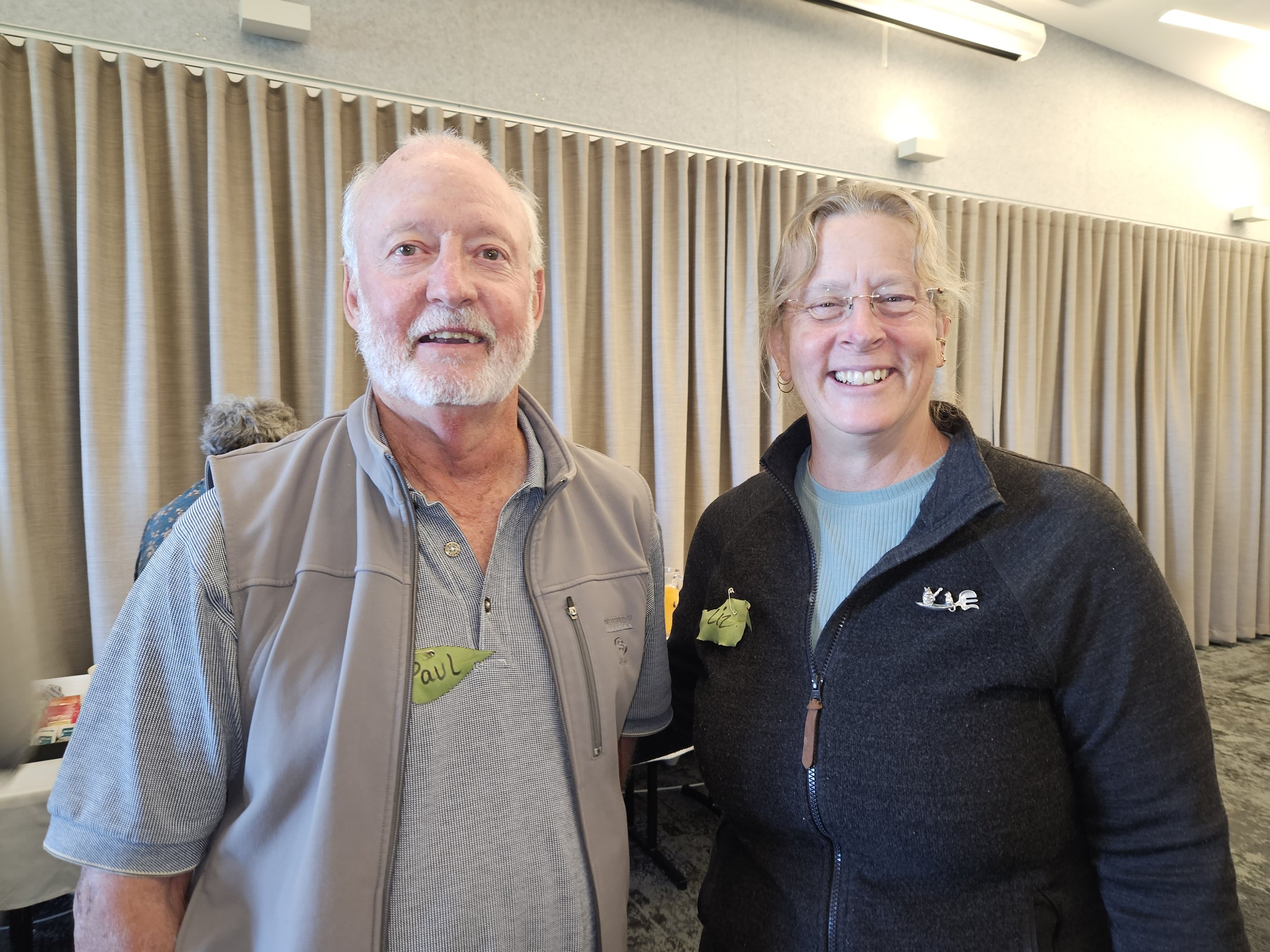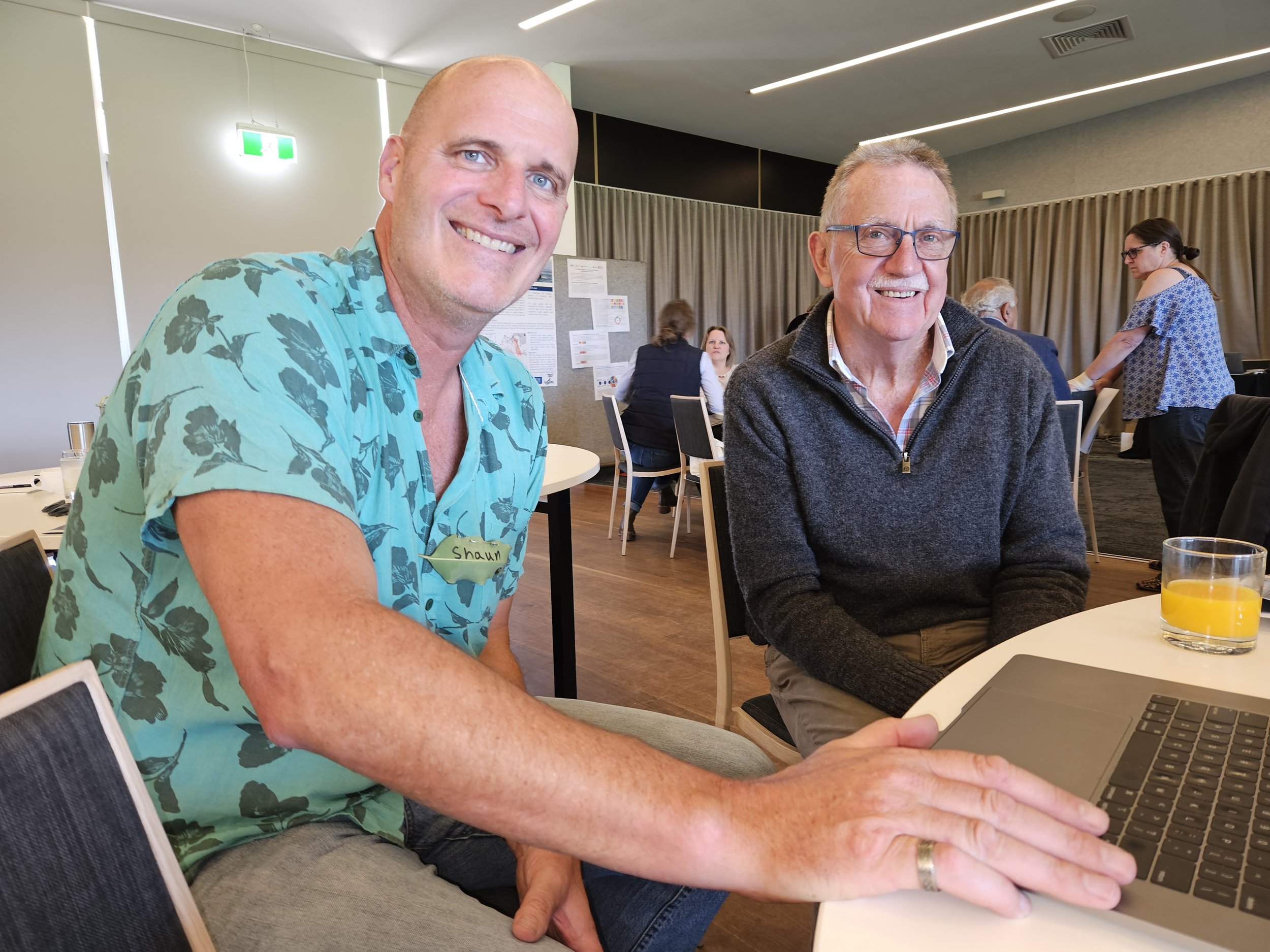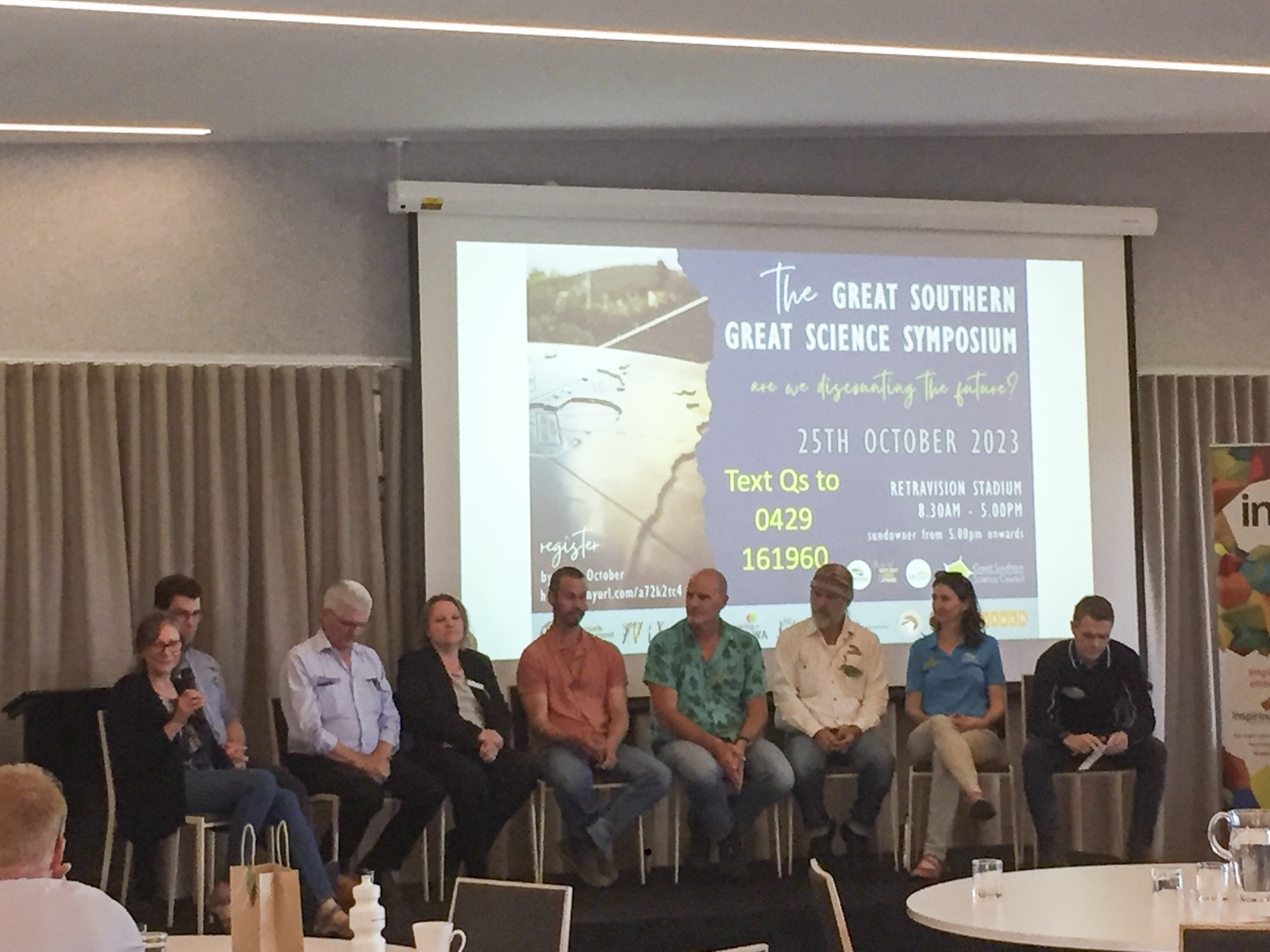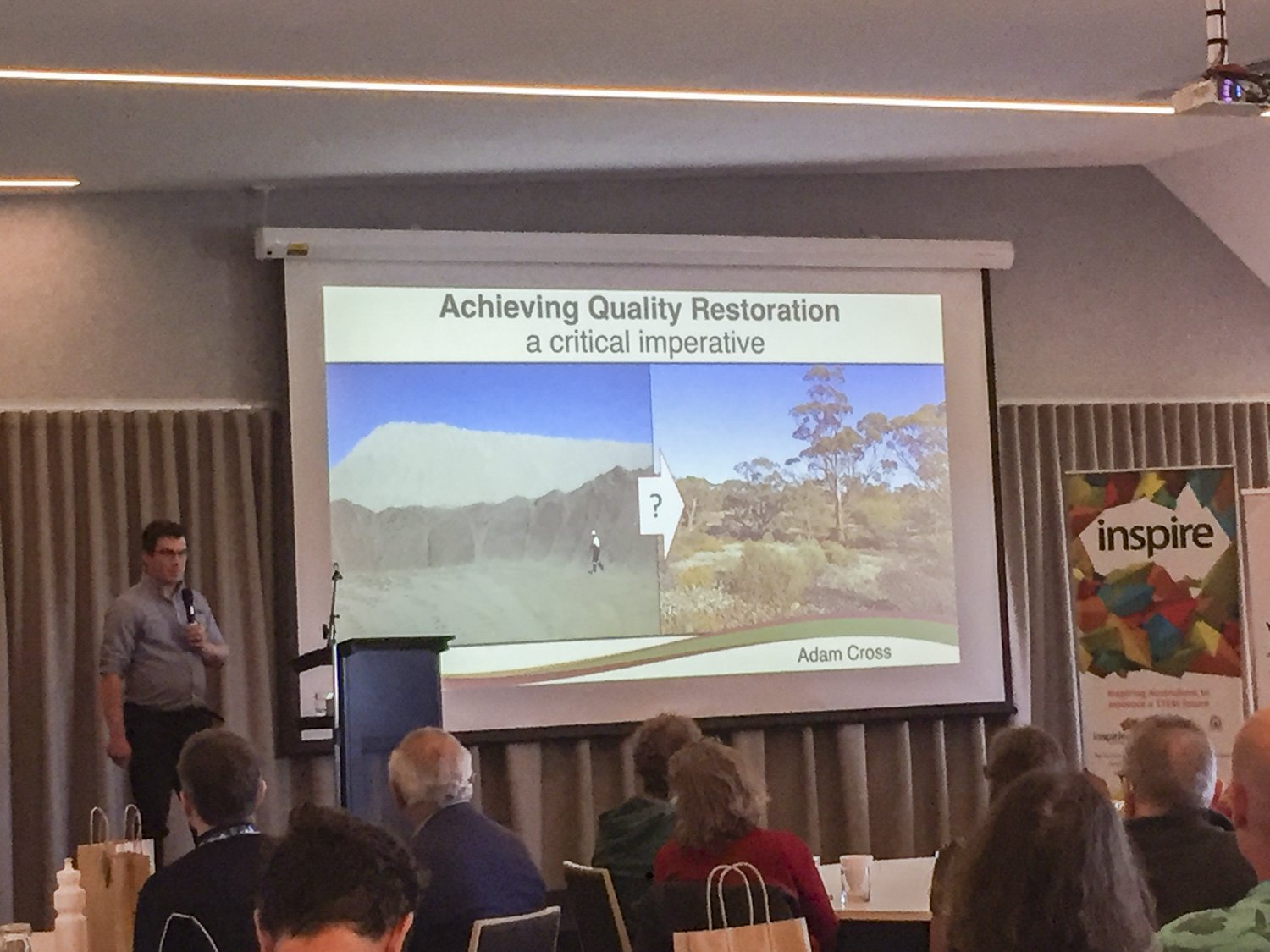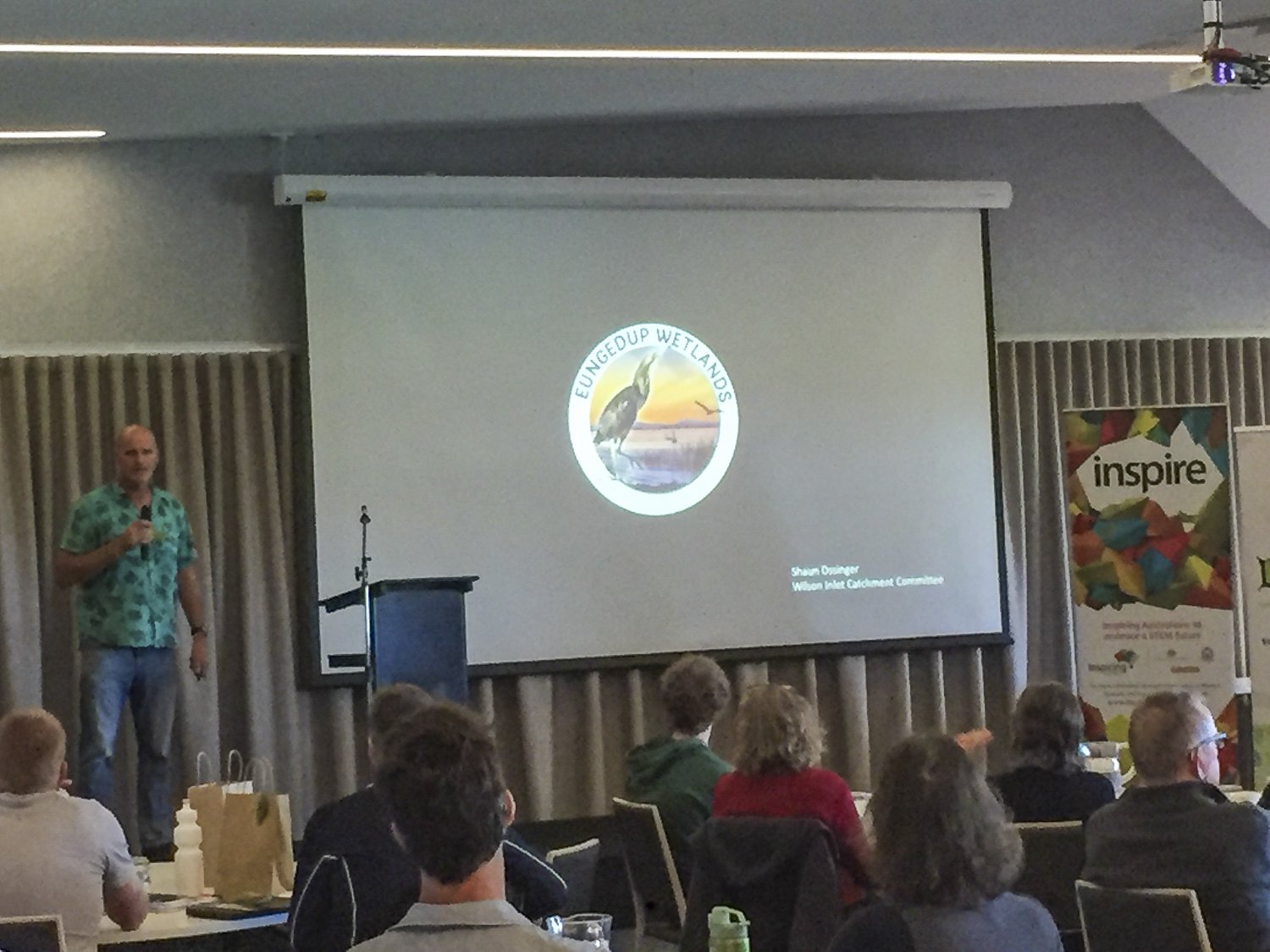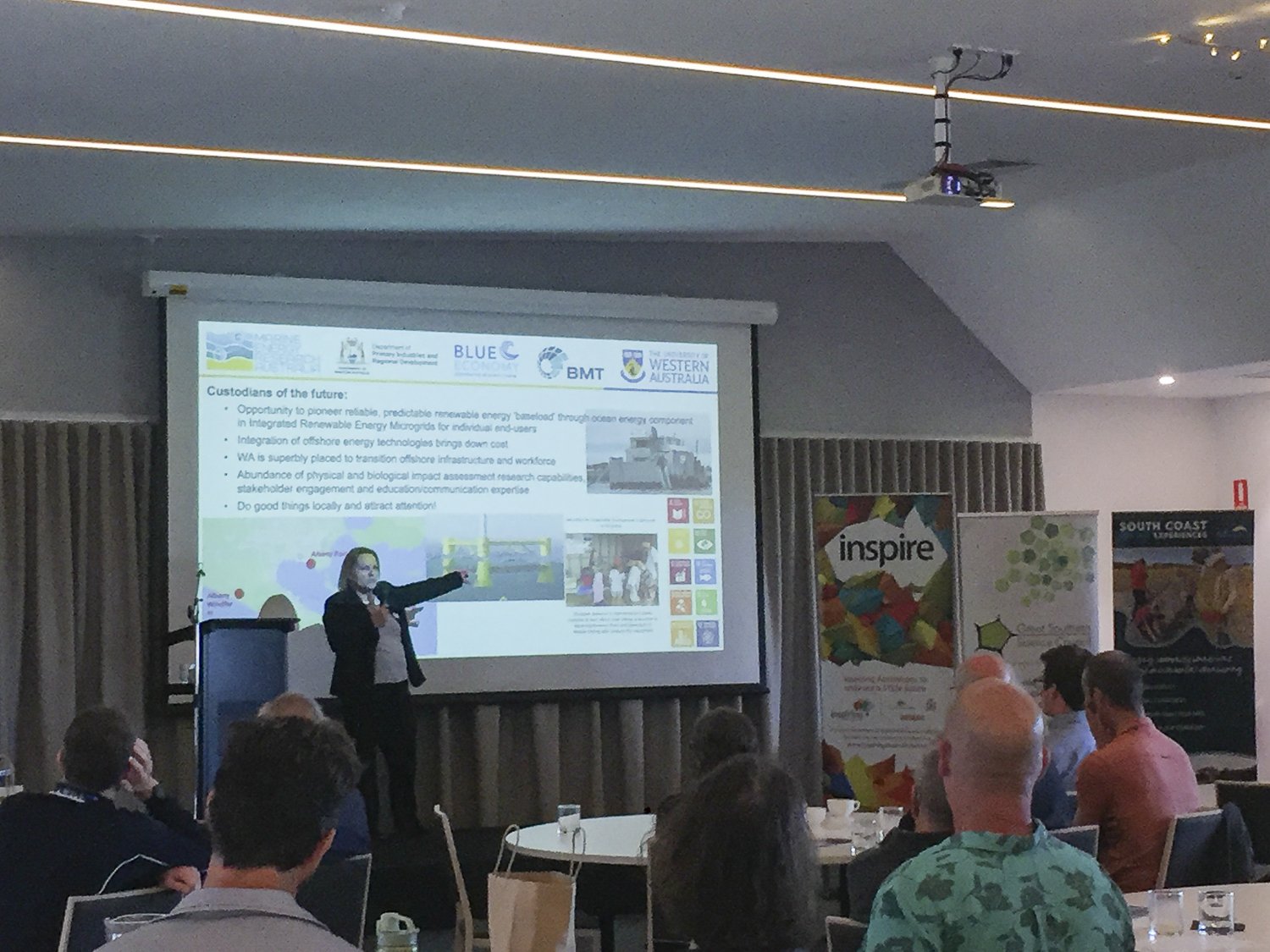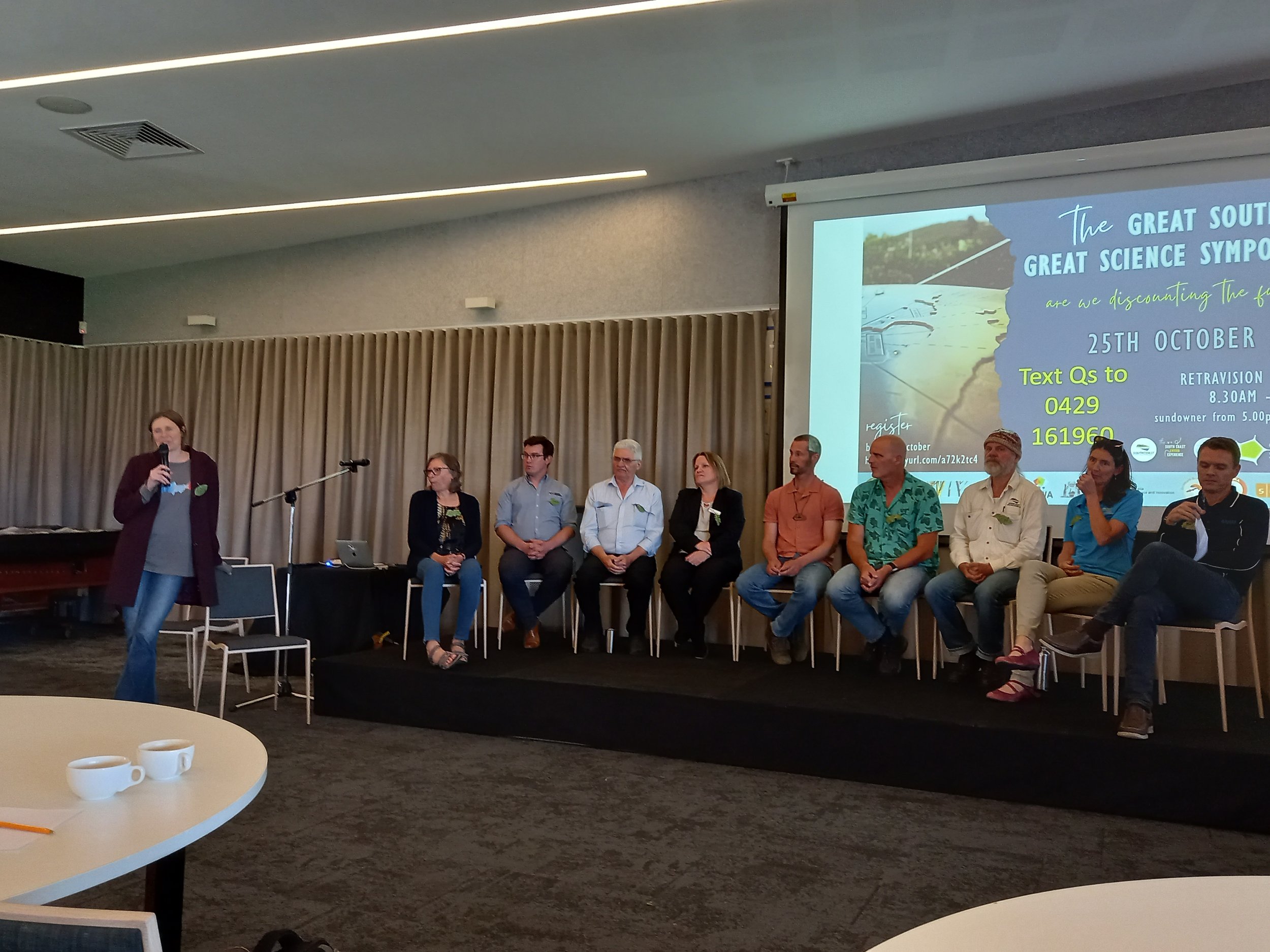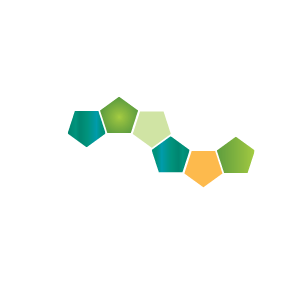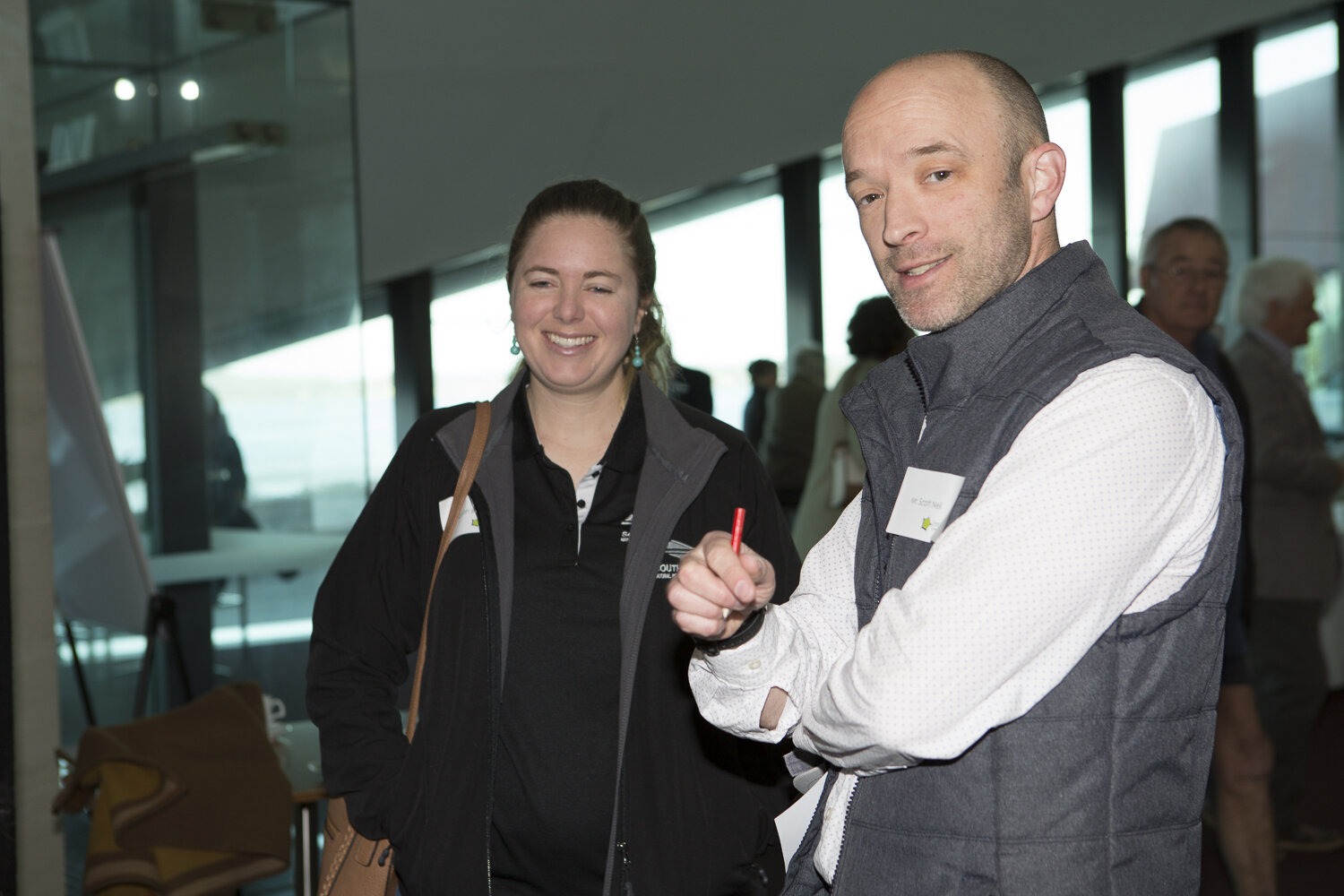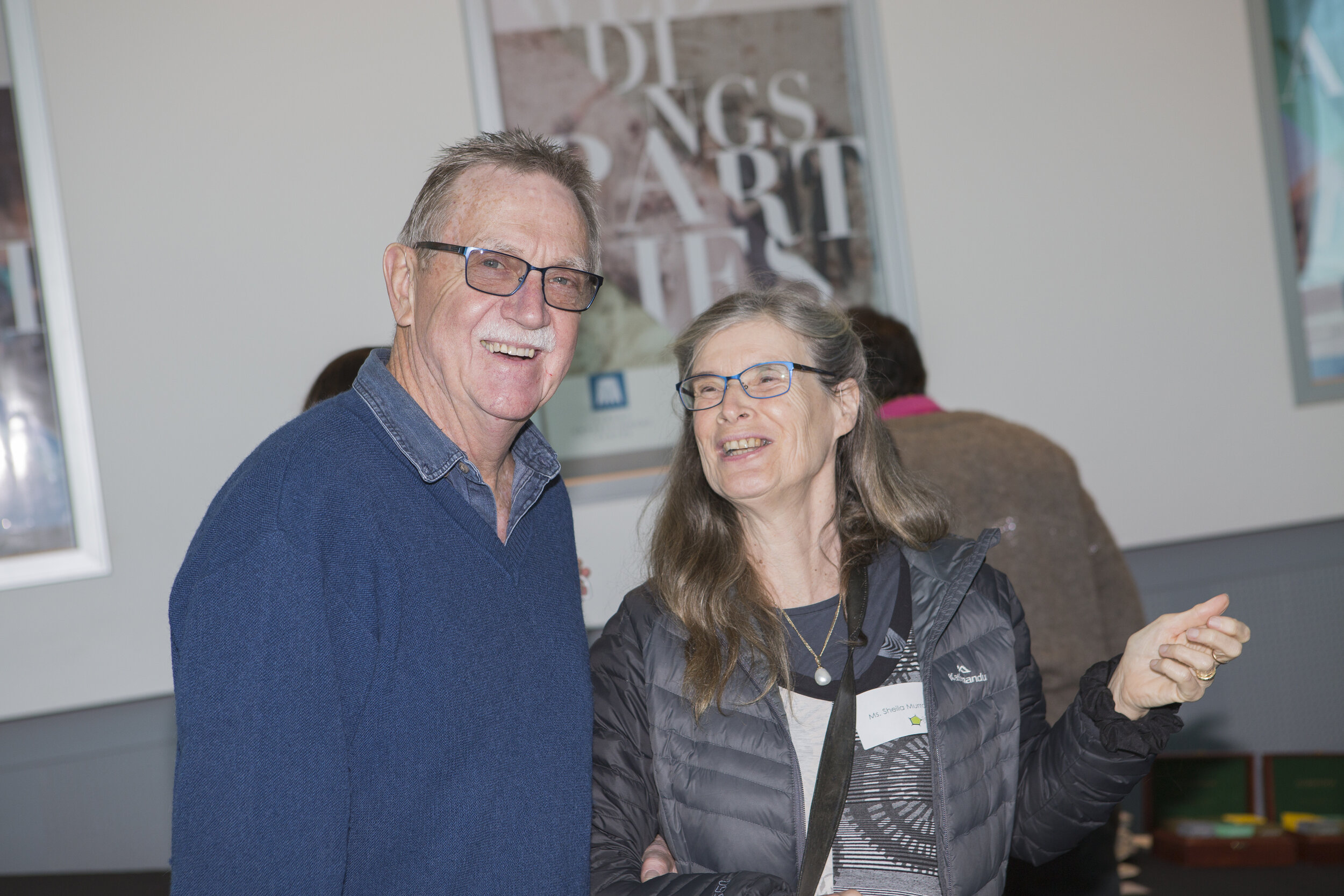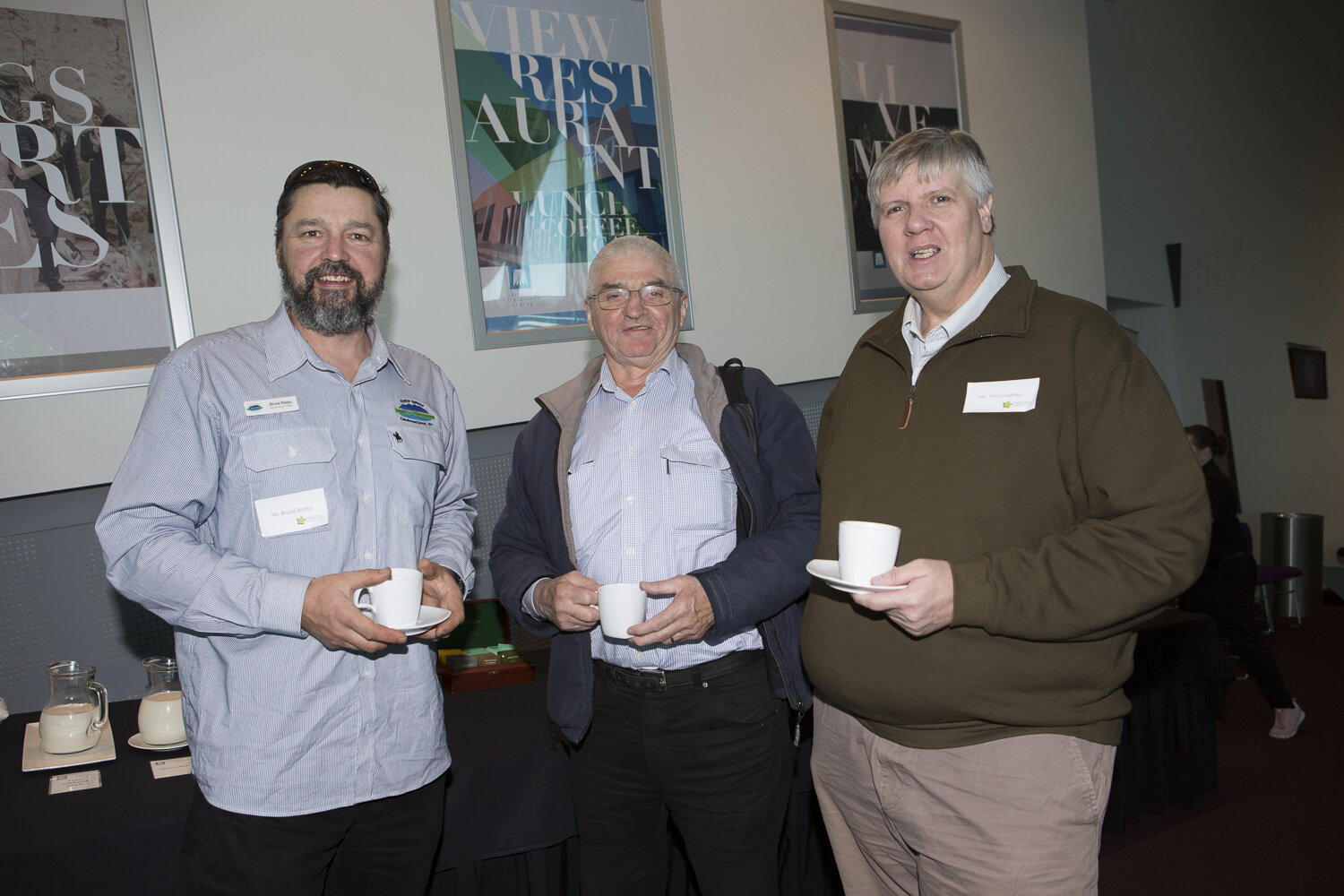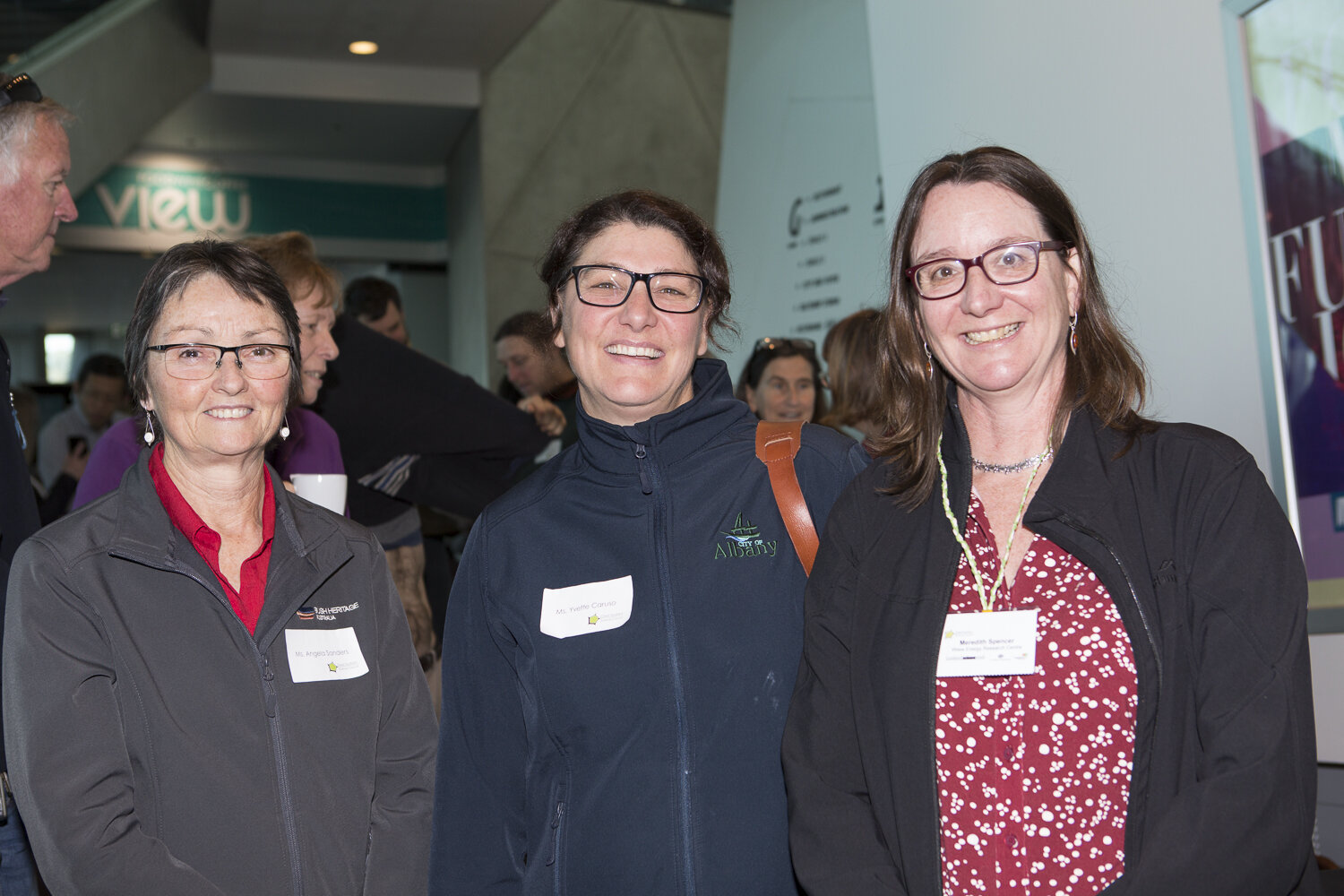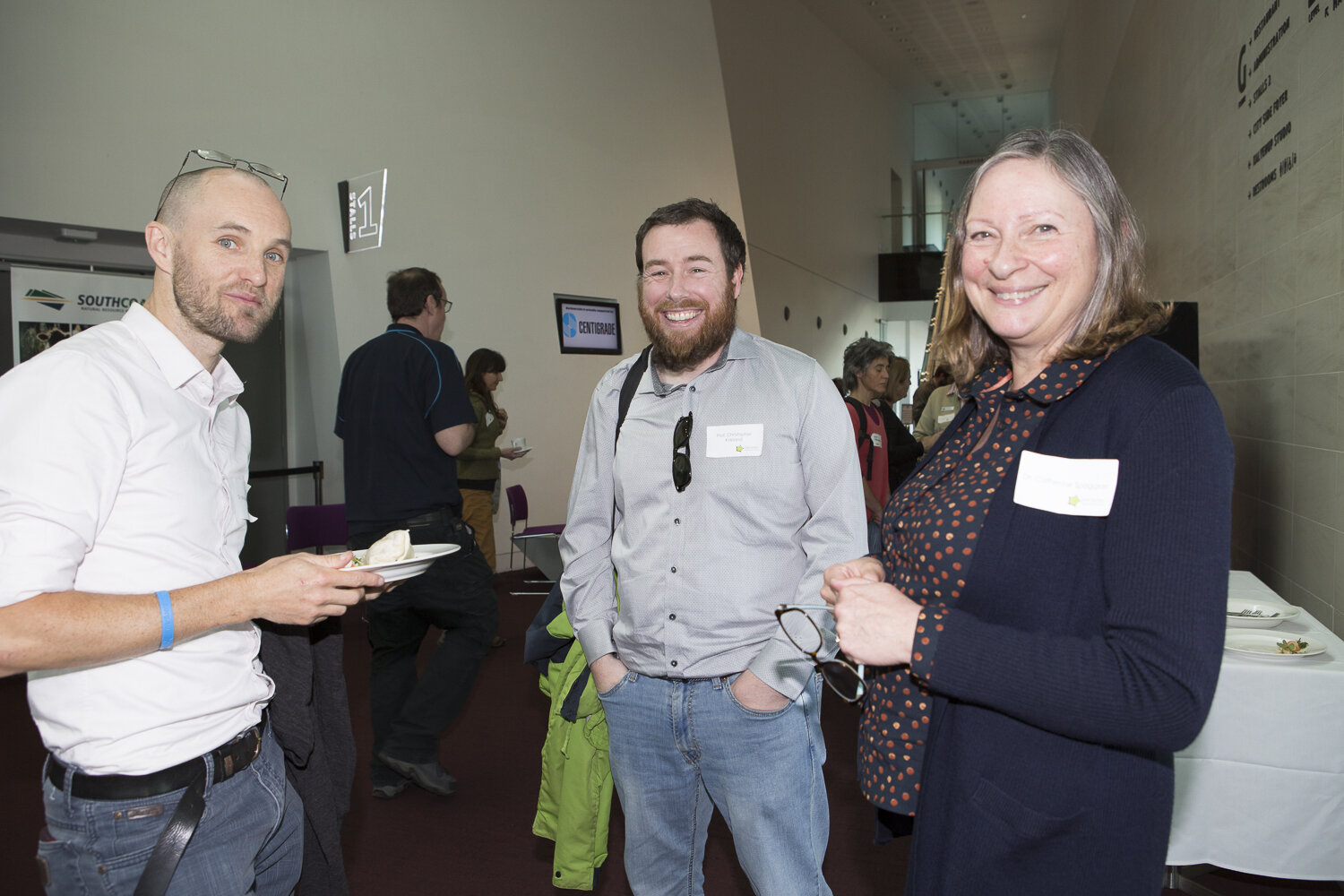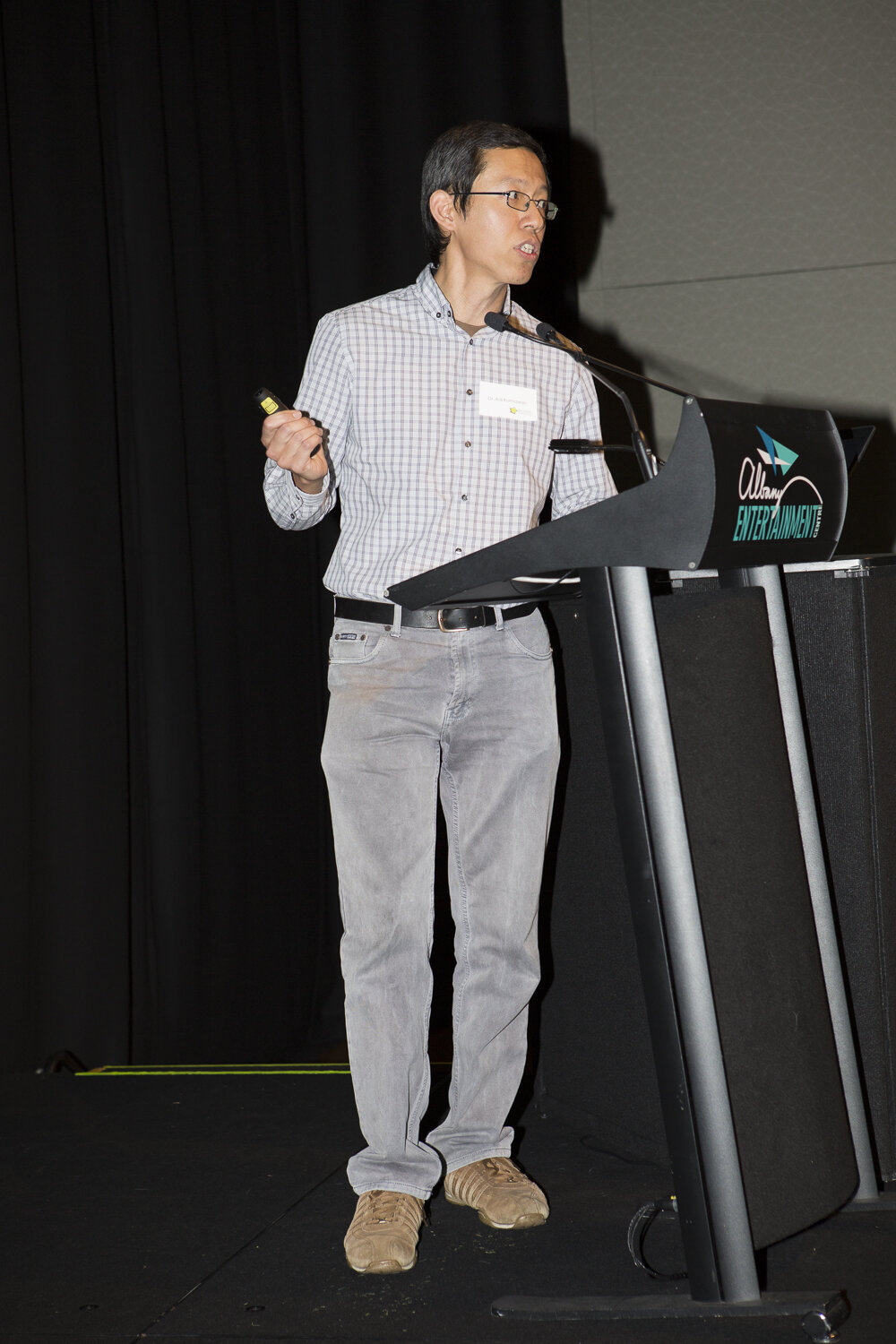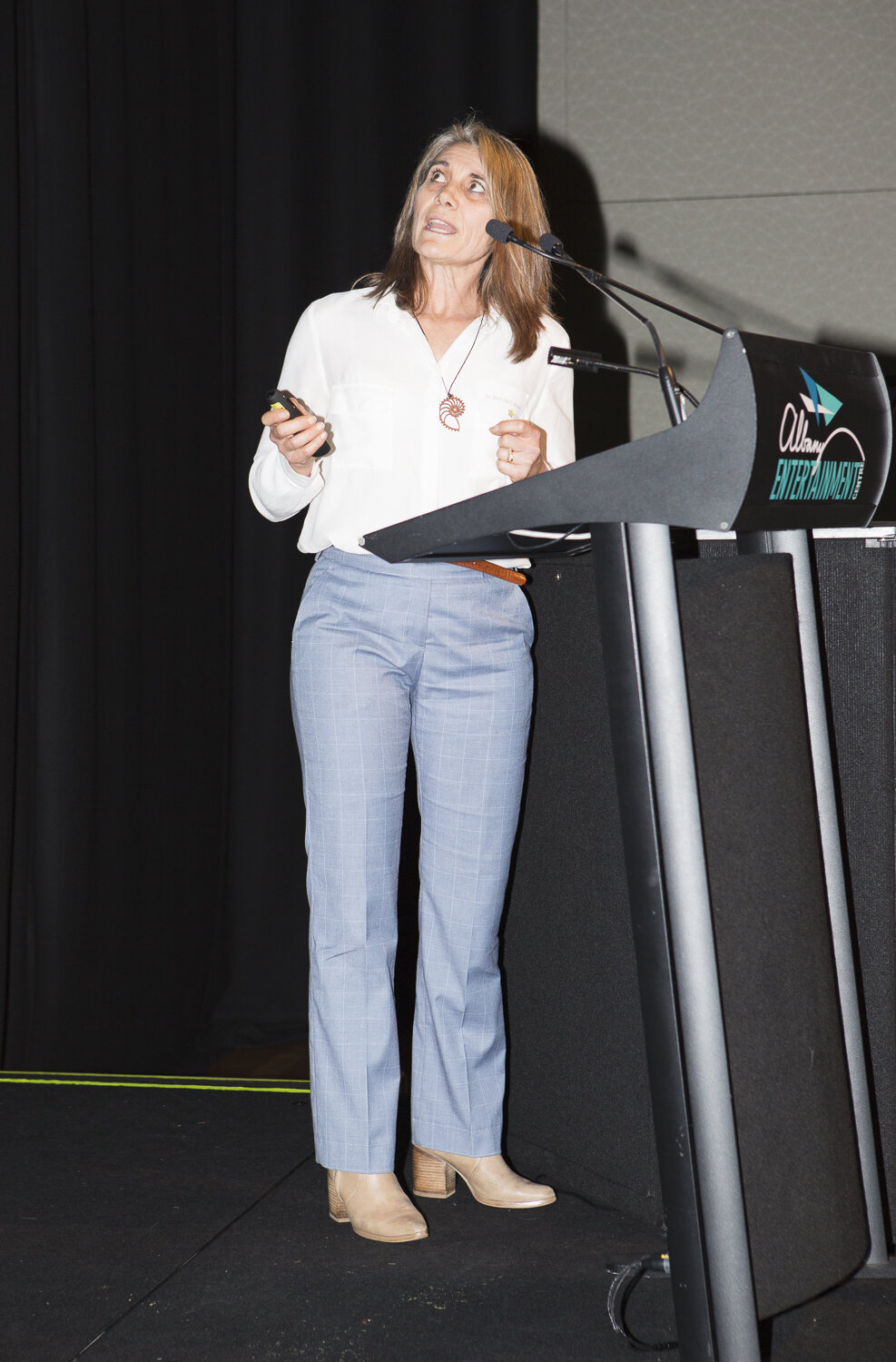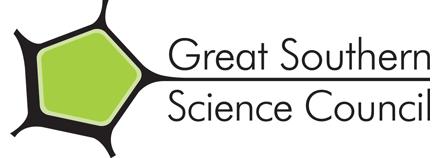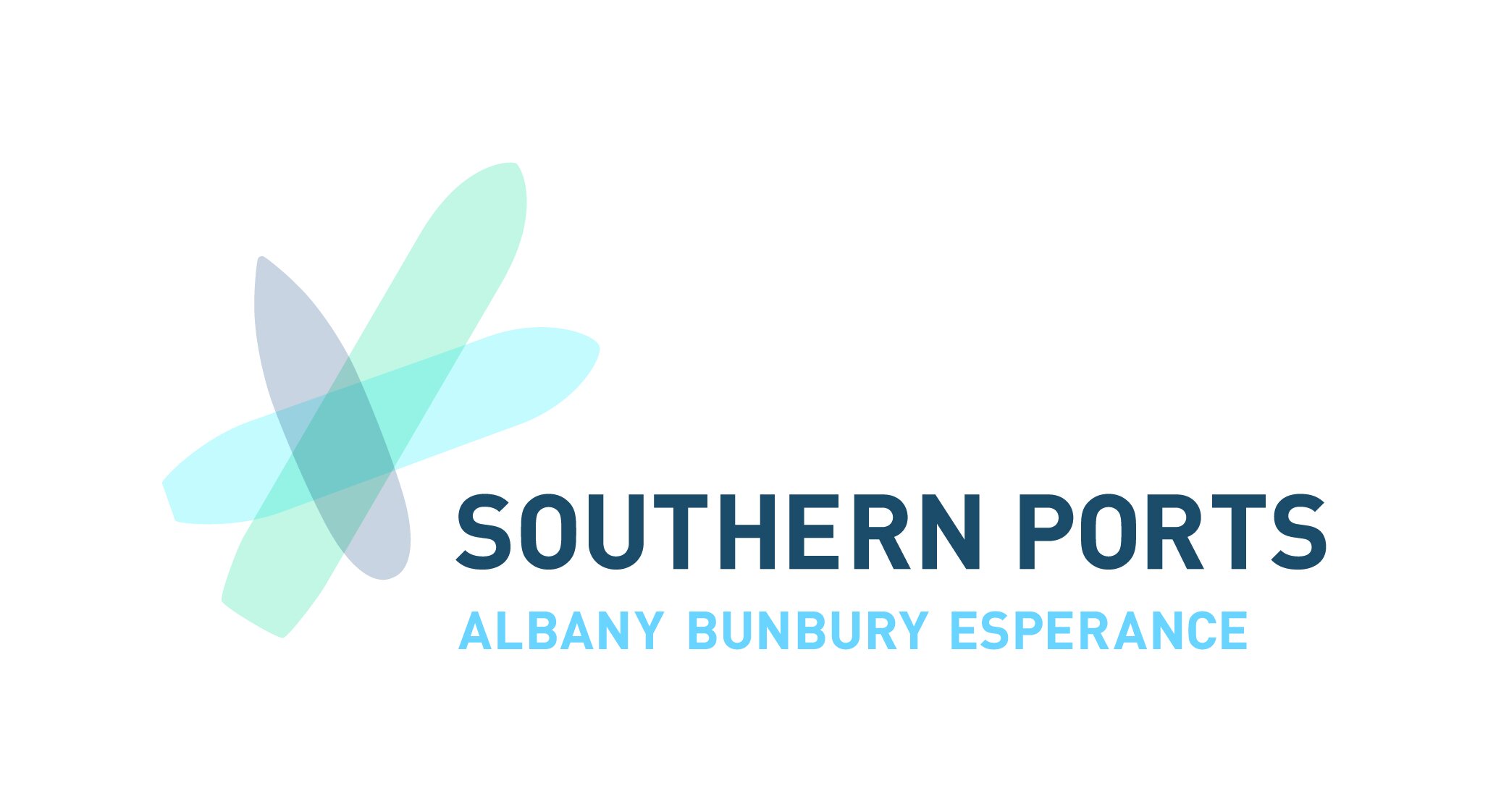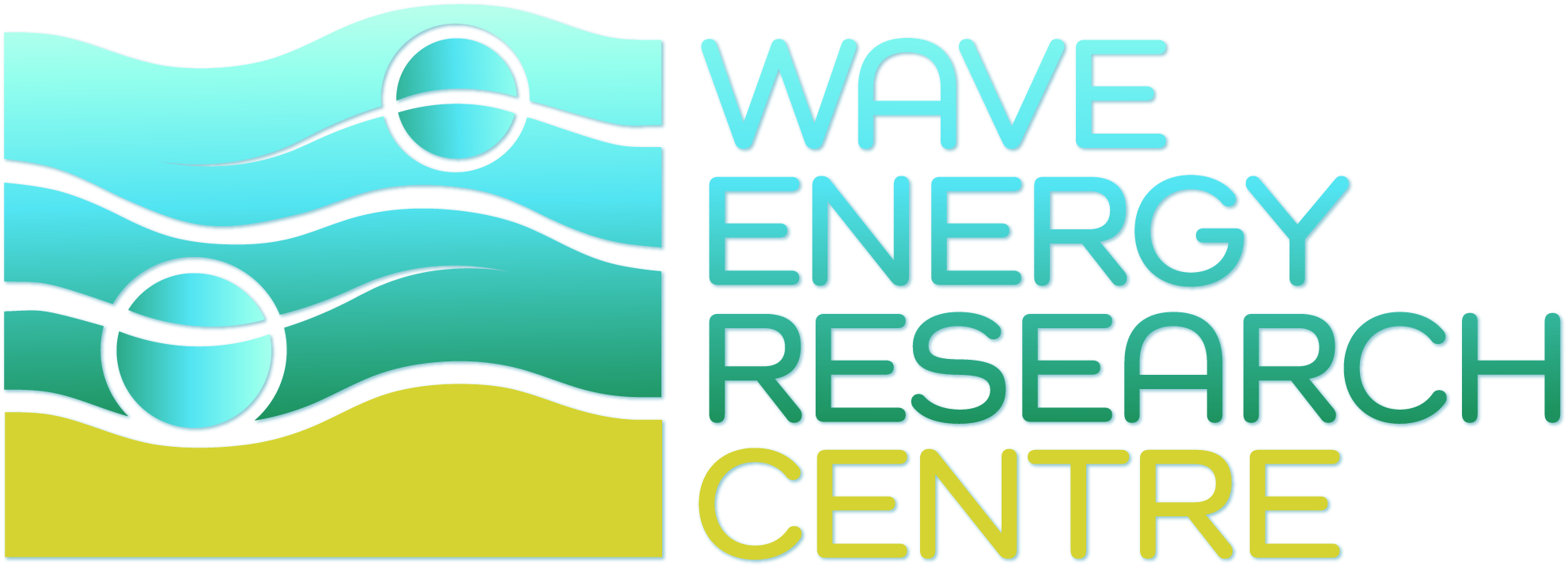Images from the successful day
After three long years, the Great Southern Science Symposium returned for 2023 with an exploration of the present and future of the Great Southern, including a session by Gondwana Link: Are we making a difference?
Topics explored include:
fire
water
two-way learning
energy
fauna
Presenters include Menang elder, Lester Coyne, Gondwana Link's Keith Bradby, Catherine Spaggiari (Fire and Biodiversity Western Australia), and Kore Beckiford (Albany Youth Advisory Council).
A panel discussion was followed by a sundowner.
The event is made possible by funding from Inspiring Western Australia, South Coast Enviro Experiences funded by Lottery West, and Gondwana Link.
Great Southern. Great Science.
If you thought an Albany music event, a Middleton beach café or even the footy was the place to be seen, think again! The Great Southern Science Symposium 2020 was a meeting place for a whole bunch of researchers, project managers and other innovators pushing the boundaries of what might be possible.
Scientific thinking has been going on ever since humans began poking around on this planet. In his Welcome to Country, Larry Blight likened the six-season calendar to an expression of meteorological science based on data collected over millennia.
Geologists threw us into the deep end of time through multi-layered stories embedded in a grain of sand. ‘The Tale of a Gondwana Zircon Crystal’ is a story waiting to be written and broadcast as an aid in rekindling a knowledge-based awe of our natural surroundings. Once people know the whys and hows of this stuff, it can’t be ‘unseen’. Its why the study of science in some form at senior high school level is so important to encourage a discerning mind with an awareness of the scientific process: the pathway of observation, testing the observations and refining knowledge. Then continue making this science fabulous and available to young adults.
A grain of sand transitioned to being a soil particle as we moved to agricultural presentations. Current practices and aspirational outlooks were presented through the lens of a ten year strategic plan. Increasingly, physical & biological data is being collected to complement the more advanced chemical picture; tillage slope threshold experiments continue; implementation timing of agronomist recommendations is being addressed as an issue in some sectors.
We quickly learnt not to mention Regenerative Agriculture, and even Sustainability was seeming risky. Can I give a shout out here to Resilience? Resilient and Dynamic Systems: Ever changing and able to bounce to a new and satisfactory equilibrium with minimum intervention.
Moving through the slipstream of presentations, we shifted from the recycling of planetary material on a deep time scale to observed changes in natural life systems. Despite private fantasies, we aren’t going back to pre-Captain Cook Australia anymore than we are going back to the continental Gondwana land mass.
Our challenges include dealing with changing climate and getting the little bits of restoration to add up to a big bit on a scale needed for ecological function across the sweeping vastness of the Gondwana Link landscape. The importance of social systems is recognised and may prove to underpin everything.
From the reincarnation of zircon crystals to the alchemy of ecosystems, science delivers a wow factor. Whether the science in the Great Southern has been collected by traditional custodianship of country or post-colonisation academic hypotheses, we need to keep pushing these ideas out.
I noticed moments where I had questions brewing for presenters, along the lines of how we deal with overt attacks on science, which often draws me to Carl Sagan’s ‘The Demon Haunted World’. An answer was inherent in the scope and details of presentations, that we focus on the positives and address the gaps. Another book ‘For Small Creatures Such as We’ has found its way into my current reading pile, written a generation on by Sasha Sagan. Celebrating our wonder for the world around us and our humanity in interpreting it.
Things can be turned around when the will is there and resources available. Looking across the foyer and through the window of our AEC venue, Princess Royal Harbour was pointed out as one example of a great restoration project. I’d witnessed something similar in Sydney Harbour with the clean-up for the Sydney Olympics showing what was possible when the will is there and resources available. Previously murky sea water became pleasantly translucent even in downtown Circular Quay.
Despite being farmed and fragmented, alchemy is still happening out there in the woodland forest. A challenge is in providing the opportunity for it to return where it is absent, into the connective tissue of landscape size life systems. Our esteemed ecologists working in a biological hotspot within a hotspot, stated Ecology IS Alchemy. As much as I love science, I love magic even more.
When some despair was expressed at the perceived financial and psychological inaccessibility of land to further enhance Gondwana conservation linkages, a voice of encouragement came from the back of the room: “We’ll get ‘em”. This reassurance could be transferred to any worthy endeavours coming up against obstacles.
With a woosh I was transported to my next destination by a diesel engine. Returning to my home town via a stop-off at a fluoro-lit sanitised shop with piped music, all designed to lull me into irrational purchasing. I remained fully grounded and impenetrable, by the alchemy of the science experienced in that room on our southern shores.
Donna Marie Carman
Southern Scribe
Why a symposium?
Albany's Great Southern Great Science Symposium showcases projects, programs and collaborations driving excellence in science endeavours in south west Western Australia. The Symposium promotes science to everyone in the Great Southern community who have a passion for life and the sciences.
Featuring oral presentations, Question & Answer sessions and posters from a wide range of science professionals and students working and studying in the Great Southern region of Western Australia, it covers all aspects of regional community life.
Since 2010, the GSGS Symposium has been an accessible platform for scientists, educators, industry professionals, school and university students and community members to explore interests in scientific research and teaching in the local area. The popularity of GSGS is seen by the increasing attendance over the years, with more than 100 delegates participating 2015.
Great Southern Great Science topics range from agriculture to anthropology, from marine science to medicine and health as well as a lot more. All science-based topics can be presented.
Great Southern Great Science Symposium is curated and hosted in Albany by the Great Southern Science Committee. The organising team is Katy Evans, Wiebke Ebeling, Helena Stoakley and Liz Tanner.
History
At the time of its inception in 2008 the Great Southern Great Science Symposium was one of the first such symposia to be held in Australia.
Papers are invited from scientists and science communicators whose work is conducted in the great southern region of Western Australia, or whose work has importance for lifestyle, economics, environment and social aspects of regional community life. Presentations and posters cover relevant scientific topics and are presented in terms clearly understood by non-specialists, the general public audience and students.
The last Great Southern Great Science Symposium was held just prior to the start of National Science Week at the Albany Entertainment Centre. It was attended by 180 people and showcased excellent, interesting and beneficial science projects being conducted in the Great Southern. Presentations were made on topics such as marine science, plant and animal sciences, forestry, biodiversity, fresh water ecology, human bioscience, soil science and geology. One of the highlights of this and previous symposia has been the contributions of local secondary schools, whose students have shown remarkable enthusiasm for their science projects.
Symposiums
View details of the Great Southern Great Science Symposia.
